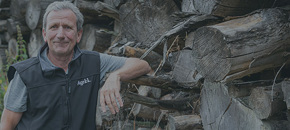
Talking Agronomy | Greg Taylor - November 2021
Blog - 02.11.21
So far, at least, this season has been kinder to us than last. A late September drenching brought our earlier drilling to a halt. But this was only temporary. And it really helped our catch and cover crops pick-up.
It also brought-on a flush of blackgrass for spraying-off ahead of our latest autumn-sown cereals which were in well before the end of October thanks to really decent drilling conditions.
The catch and cover crops didn’t put on nearly as much early growth as we would have liked, though; the later-sown ones suffering far more than those we got in earlier.
Interestingly, the brassicas in our mixes have proved noticeably more resilient to the conditions than the phacelia or berseem clover. And while the buckwheat we drilled in early August was knee-high and flowering by mid-October, that sown two weeks later has struggled to be of much use at all.
More expensive they may be, but this is another feather in the cap of more complex mixes. With the UK ‘on the climatic edge’ as far as catch-cropping success, in particular, is concerned, a good mix of species makes great sense in risk management as much as biodiversity.
Just like the oilseed rape, this season’s experience has also focussed our minds on what we can do rotationally to give ourselves the best opportunity for early August drilling. Winter barley is an obvious choice and, for those with livestock in the system, whole-crop cereals.
Our earliest sown OSRs are well set and very promising. To eliminate any extra stresses on them we have been exploring if we can cut back on certain herbicides while bolstering crop health with Nutri-Phite PGA and extra micronutrients. By doing so we hope to reduce the risk of crops going backwards in the spring under the combined pressures of CSFB larvae, pigeons and frost.
Better-grown crops with bigger GAIs on healthier, more resilient soils, of course, will be especially valuable with nitrogen supplies – and prices – as they are. This season really underlines the importance of improving Nitrogen Use Efficiency.
Where we have tackled grassweeds with a determined rotation-wide approach, getting back to earlier wheat sowing is proving invaluable in this respect. One crop of Skyfall direct drilled in mid-September on ground that used to suffer badly from black-grass and brome, for instance, is especially well-grown and very clean.
We did, however, hold-off drilling fields less far down our ‘grassweed exclusion route’ until mid-October. Pre-planting glyphosate ahead of drilling with as little soil movement as possible and a robust pre-em/peri-em programme remained our main establishment strategy here.
Delaying autumn drilling any further on heavy ground is far too much of a lottery to contemplate, though. Instead, any such land still posing particular blackgrass concerns has a winter cover and won’t be drilled until the spring. That way we can be sure of the best control ahead of drilling, the most competitive and profitable crops, and the least risk of soil damage.
We will be keeping a close eye on these covers going into the winter, checking them carefully for grassweeds that are both easy to miss and hard to kill if they get too big and tillered. Any carrying a significant weed burden will be sprayed-off before Christmas and again ahead of drilling for the most effective pre-planting control.
Otherwise, we will leave the covers through to February, spraying or grazing them off a good six weeks before we want to drill. Fail to do this and we find the moisture they hold – not to mention the trash – really gets in the way of direct drilling.
Speaking of which, although disc drills are generally the best at cutting through trash, in our experience they are also more susceptible to poorer conditions.
Which is why we tend to prefer tine-based or hybrid drills as our best way into direct drilling on heavier land in most cases.
Greg Taylor
Join Our Community

Agrii X
We love engaging with clients and partners. Give us a follow and let's share stories for the community.

Agrii Instagram
A picture paints a thousand words. Follow us on Instagram to see what we are up to.

Agrii Facebook
Follow us on the worlds biggest social media site for the latest news and events straight to your feed.

Agrii LinkedIn
If you are all about the business, connect with us on LinkedIn to build your network
Stay In Touch

Newsletter Sign-Up
Receive email updates on topical news and information from around Agrii and UK Farming.

Listen To Our Podcasts
Listen to the Tramlines Podcast. Fortnightly chat about agriculture and trials with your host Tony Smith.

Agrii Insights
Read essential agri intelligence for profitable farming.

Find an Event
Join us for our upcoming events and tours.



